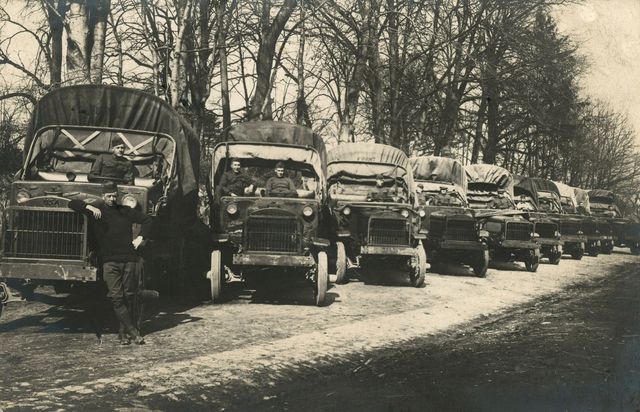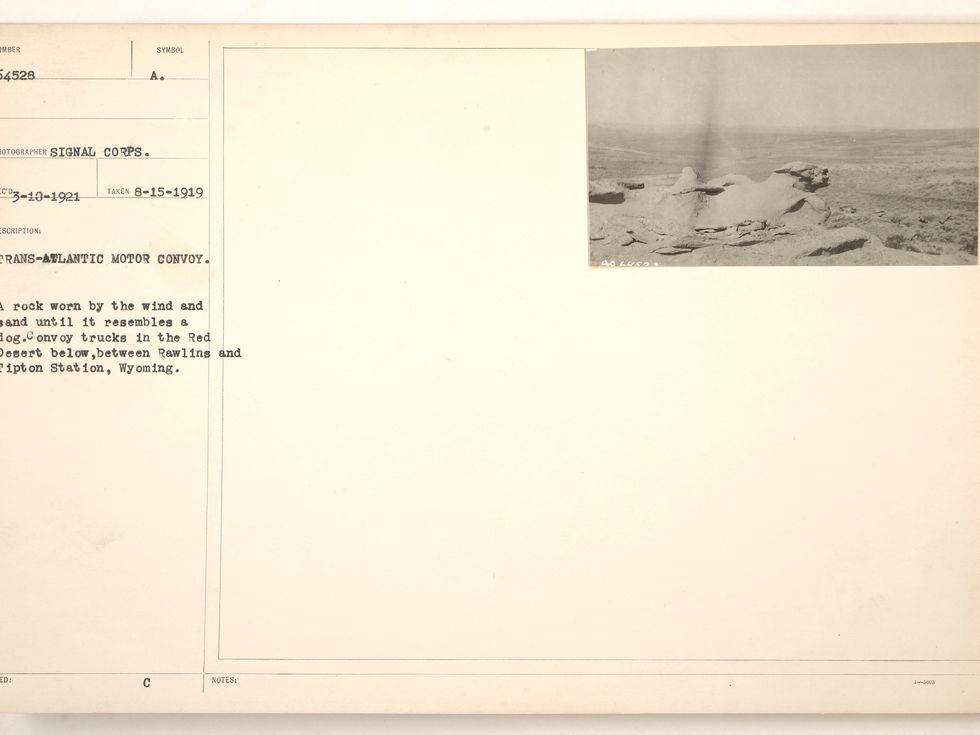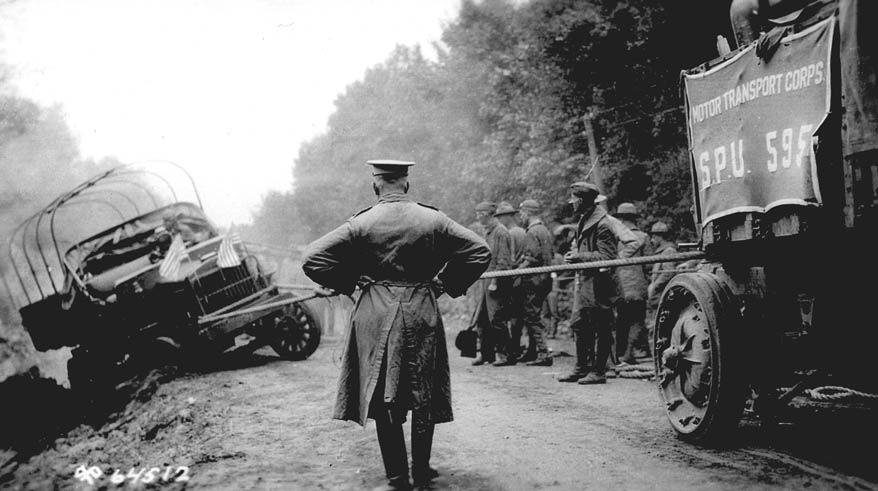Shortly after World War I, the U.S. Army set off on its most ambitious expeditions to date: traveling from one end of America to the other with nothing but trucks.
The Army, eager to prove the utility of trucks and roads in a future war, sent nearly one hundred vehicles on a trip from Washington D.C. to San Francisco. The trip was unfathomably difficult by today’s standards, with vehicles breaking down and bursting into flames, soldiers falling ill, and bridges and other road works damaged.
World War I was the first conflict in which motor vehicles made a substantial contribution. Invented in the 1900s, the car was quickly adapted into the truck and bus, both of which were used to move men and supplies long distances to the front line. After the war the U.S. Army, eager to show the utility of trucks and vehicles as fast-moving (relatively speaking) transports, organized a convoy from Washington D.C. to San Francisco—2,432 miles as the crow flies.
Over the next 61 days, the convoy would drive across America’s, uneven, disjointed, and occasionally non-existent road network. The convoy, as The Washington Post describes it, consisted of nearly one hundred “heavy troop carriers, light trucks, sidecar motorcycles, reconnaissance cars, field kitchens, blacksmith shops and one Renault light tank.” The convoy was manned by 24 expeditionary officers, 15 observation officers, and 258 enlisted men. The convoy made its way across the U.S. on the Lincoln Highway, now U.S. Highway 30, passing through 350 towns along the way.
One staff officer along for the ride, future President of the United States Dwight David Eisenhower, described road conditions as varying from “average to non-existent.”
The convoy was involved in 230 accidents and damaged 88 bridges. Twenty one personnel were injured as the convoy rolled across America and did not finish the trip. The injuries, accidents, and breakdowns are all the more astounding considering the convoy moved at an average speed of less than six miles an hour—about twice as fast as a person can walk.
This video, posted by the National Archives to YouTube, is 25 minutes long and basically a highlight reel of the trip, recording its departure from Washington to its arrival at the Golden Gate.
The daily log of the convoy, posted to the National Archives website, records the trip in detail. On July 11th, the convoy left Greensburg, Pennsylvania at 7am and arrived at Sewickley in the same state at 5pm. Even with “excellent” roads, the convoy only managed 48 miles. The log shows that as the convoy ground on, more and more vehicles suffered mechanical breakdowns, including carburetor problems, engine trouble, sheared bolts, flat tires, and other issues increasing the closer the convoy got to California. Vehicles even had problems running from the “poor grade of gasoline” sourced locally.
As the National Archives says, “although the convoy was intended to be self-sustaining to simulate wartime conditions, this goal was undermined by the barbecues, melon fests, and other offerings of the hospitable Americans who welcomed the convoy to their towns.”
Other times, the trip was hard and at times difficult to reconcile with the modern United States. On July 15, “Rear wheels of Class B tanker went through small culvert bridge.” The bridge was repaired by convoy engineers. On August 13th, “Right wheels of Mack Blacksmith Shop #4 sheared through 16x3”x10” bridge floor planks and narrowly avoided falling into a 12’ ravine”. August 28th: “two Class B trucks skidded off roads in canyon” but avoided damage.” Outside of Granite Rock, Utah the conditions were particularly bad: “Stalling of fuel truck prevented a cooked dinner. Supper consisted of cold baked beans and hard bread, mere existence being chief concern.”
The convoy proved to American people that transcontinental travel was viable—but only if America invested in her roads. The highway system continued to improve on a local level over the years, bolstered by the need for good roads during World War II. In 1956, convoy member President Eisenhower signed the Federal-Aid Highway Act, which funded construction of the interstate highway system we take for granted today. The Act provided for 41,000 miles of highways, meaning that a modern trip cross-country can be accomplished in four days or less, not 61 days.
For its part, the Army was convinced that mechanization was the key to winning future battles. The U.S. Army in World War II, just twenty years later, was fully motorized with trucks, trailers, scout cars, tanks, and armored personnel carriers at a time when even the mighty German Army still relied heavily on horse transport. The Army’s success in the war is directly attributable to the exploits of a convoy that trucked across America in 1919.
Source: The Washington Post

Kyle Mizokami is a writer on defense and security issues and has been at Popular Mechanics since 2015. If it involves explosions or projectiles, he's generally in favor of it. Kyle’s articles have appeared at The Daily Beast, U.S. Naval Institute News, The Diplomat, Foreign Policy, Combat Aircraft Monthly, VICE News, and others. He lives in San Francisco.
















